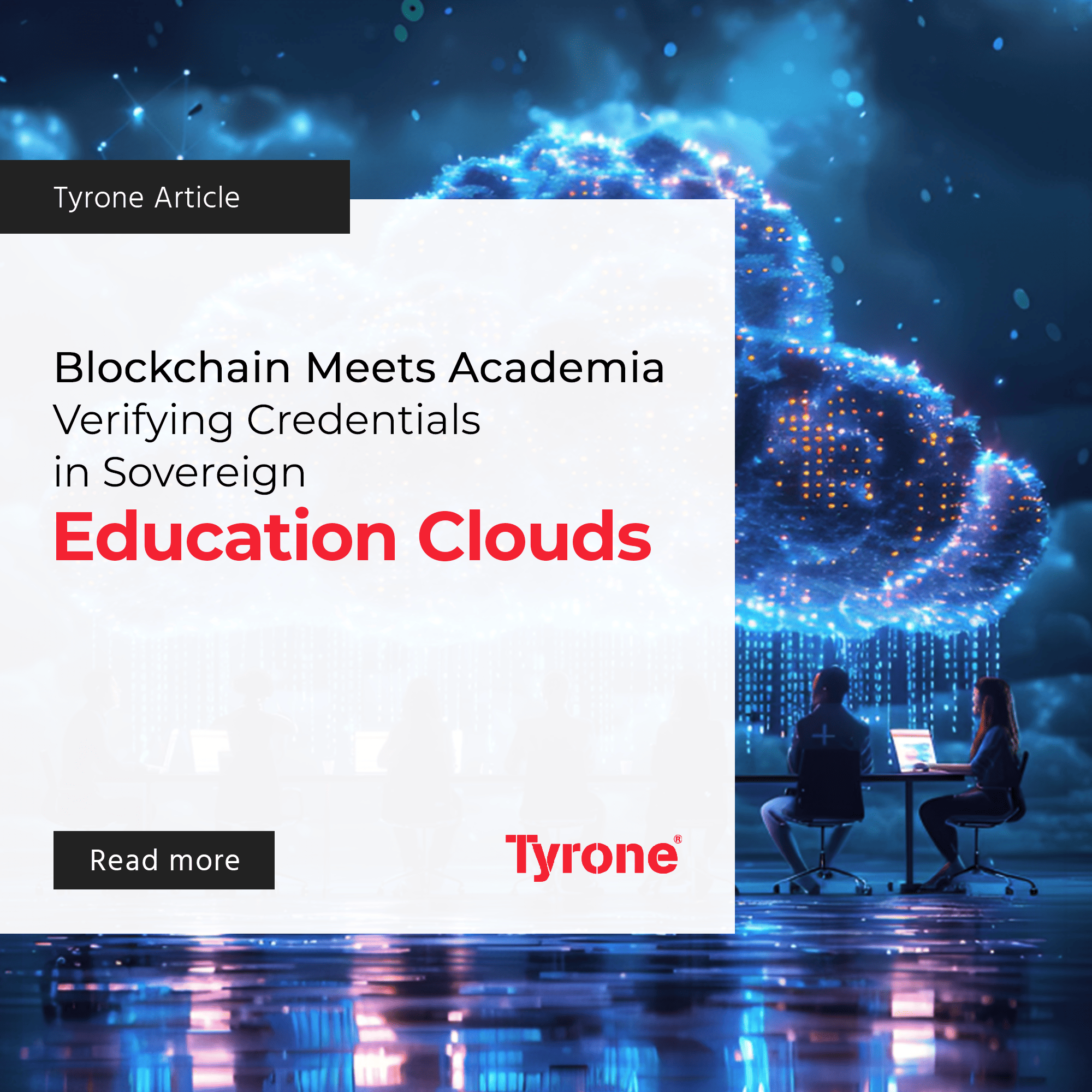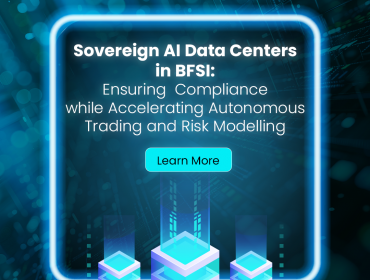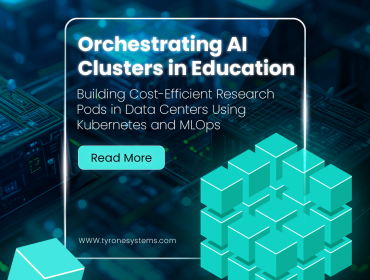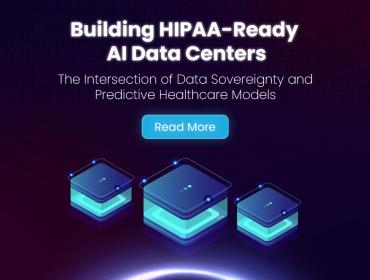As academia moves to digitize and decentralize, the traditional model of verifying academic credentials is under pressure to modernize. Sovereign education clouds—designed to uphold jurisdictional control over data—are now intersecting with blockchain technology to ensure credential authenticity, interoperability, and regulatory compliance. For universities, employers, and governments, the convergence of self-sovereign identity (SSI) and verifiable credentials offers a strategic, future-ready solution to the long-standing challenge of academic trust.
The Strategic Imperative: Sovereignty and Trust in Academic Systems
Redefining Sovereign Cloud in Education
The rise of sovereign cloud initiatives like GAIA‑X and AWS European Sovereign Cloud reflects a broader push toward digital autonomy. These infrastructures guarantee that data—especially sensitive academic records—reside within national borders and comply with local governance models such as GDPR. For educational institutions, this isn’t just a compliance requirement; it’s a strategic safeguard against geopolitical, privacy, and reputational risks.
Credential Verification: The Broken Status Quo
Traditional verification processes are plagued by inefficiencies, long turnaround times, and vulnerability to forgery. Cross-border academic mobility and remote hiring only exacerbate the issue. Employers and institutions spend significant time and resources validating paper or PDF-based records—an approach incompatible with a digitized, global workforce.
Blockchain’s Role in Academic Credentialing
Self-Sovereign Identity (SSI) and Verifiable Credentials
Blockchain introduces a paradigm where students own their credentials through decentralized identifiers (DIDs) and store them in encrypted digital wallets. Verifiable credentials—anchored to blockchain and digitally signed by issuers—can be shared selectively and validated instantly, removing intermediaries and reducing the risk of tampering.
Standards-Based Infrastructure
This model is built on W3C-backed frameworks that promote open interoperability. DIDs replace centralized identifiers, while verifiable credentials ensure cryptographic integrity and selective disclosure. Together, they form the bedrock of trust without sacrificing privacy or control.

Real-World Adoption: Pilots to Production
Europe’s EBSI and GAIA‑X
The European Blockchain Services Infrastructure (EBSI) has launched credential pilots allowing EU citizens to receive blockchain-verified diplomas from academic institutions and share them with employers via SSI wallets—entirely hosted on sovereign infrastructure.
University-Led Initiatives
Global institutions are not far behind. For example, multiple universities in the Netherlands and Singapore have adopted blockchain to issue diplomas that can be independently verified in seconds. These implementations eliminate administrative bottlenecks and protect academic reputation.
India’s Sovereign Credential Repository
India’s National Academic Depository, integrated with DigiLocker, showcases sovereign credential management at scale. It hosts over 372 crore academic documents from 149 issuers, benefitting 3.3 crore users—a sovereign, citizen-scale system built on national cloud infrastructure (Source: Wikipedia – National Academic Depository).
Why This Matters: The Stakeholder Value Chain
For Universities
- Brand Protection: Fraud-proof credentials protect institutional reputation.
- Efficiency: Smart contract issuance and revocation reduces overhead.
- Global Compatibility: Credentials are instantly usable across borders.
For Employers
- Instant Trust: Blockchain-anchored credentials eliminate manual background checks.
- Selective Disclosure: Only relevant information is shared, preserving applicant privacy.
- Auditability: Immutable credential trails reduce liability in regulated industries.
For Governments
- Data Sovereignty: Credentials are hosted within national jurisdiction.
- Regulatory Alignment: Systems comply with domestic privacy laws.
- Cross-Border Mobility: Blockchain’s global compatibility supports education diplomacy and international talent flows.
The Numbers Speak
- The global Blockchain In Education Market is poised for significant growth, starting at USD 0.35 billion in 2024, rising to USD 0.5 billion in 2025, and projected to reach USD 9.39 billion by 2033, with a CAGR of 43.94% from 2025 to 2033. (Source: BusinessResearchInsights).
Implementation Roadmap: Building for Sovereign Scale
1. Governance and Collaboration
Stakeholders must establish governance models that cover standards adoption, revocation policies, interoperability, and credential schemas. This is best achieved through public-private-academic consortia.
2. Sovereign Cloud Hosting
Credential platforms must reside within government-certified sovereign clouds. This ensures compliance, control over cryptographic keys, and adherence to jurisdictional boundaries—especially vital for student data.
3. Standards and Vendor Neutrality
To prevent platform lock-in, stakeholders should mandate support for open standards such as Blockcerts, W3C DIDs, and BACIP (Blockchain Academic Credential Interoperability Protocol). Embracing such standards guarantees credential portability across institutions and borders.
4. Privacy by Design
Systems should integrate zero-knowledge proofs and selective disclosure methods to ensure that students control what data is shared, with whom, and for how long—satisfying both user expectations and regulatory requirements.
From Vision to Execution: Strategic Actions
- Pilot Programs: Start with limited-scope implementations—such as issuing blockchain diplomas for graduate programs—to test governance, infrastructure, and user experience.
- Inter-Institutional Collaboration: Join frameworks like EBSI or BACIP to benefit from shared tooling, standards, and interoperability layers.
- Employer Integration: Create APIs and verification portals that allow credential validation with minimal friction, targeting high-volume sectors like IT and healthcare.
- Scaling Beyond Degrees: Include micro-credentials, assessments, and research certifications to build a full academic record, verifiable and sovereign.

Conclusion: Academic Trust in the Age of Digital Sovereignty
Blockchain and sovereign cloud infrastructure are not mere trends—they are strategic necessities for a modern academic ecosystem. As academic institutions strive to uphold trust and integrity in a globalized, digital-first landscape, verifiable blockchain credentials offer the foundation for instant, secure, and sovereign validation.
For universities, employers, and policymakers, the time to act is now. By embracing open standards, investing in sovereign infrastructure, and rethinking governance models, stakeholders can unlock a future where academic trust is borderless, fraud-proof, and student-owned.











